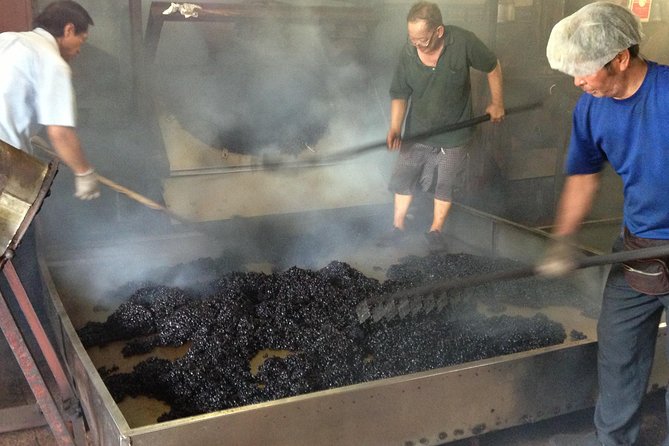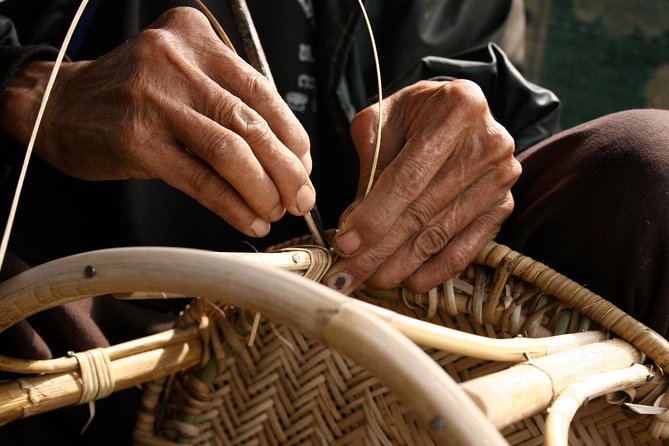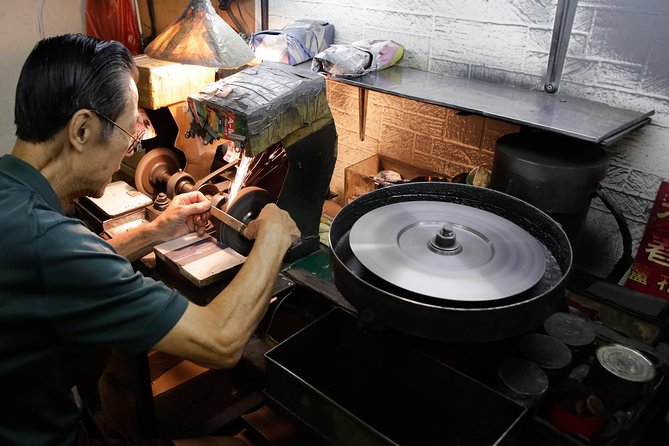In a world where technology reigns supreme and trends come and go with the swipe of a finger, there exists a quiet yet significant shift that threatens the very fabric of traditional trades. These disappearing trades, once the backbone of thriving industries, now find themselves teetering on the edge of extinction.
The sound of sizzling coffee beans in a bustling factory or the aroma of freshly baked bread in a neighborhood bakery are slowly fading into the background, replaced by the hum of machines and the convenience of mass production. But what is lost when these trades disappear? What stories remain untold, and what skills vanish into obscurity?
As we peel back the layers of this vanishing world, the tales of resilience, craftsmanship, and cultural heritage emerge, beckoning us to explore the fate of these trades and the individuals who dedicate their lives to preserving them.
Good To Know
- The decline of traditional trades is influenced by factors such as technology, changing consumer preferences, economic factors, and a decrease in demand for handmade products.
- Modernization has a significant impact on traditional crafts, leading to changing consumer preferences, a lack of technological advancements, a decline in skilled artisans, and a struggle to compete in the market.
- Disappearing trades hold cultural significance as they preserve heritage, reflect values and way of life, represent traditions and customs, and contribute to a culture’s identity and economy.
- Preservation efforts and initiatives include documenting knowledge, organizing workshops, creating platforms for artisans, raising awareness, and fostering a sense of pride and identity. Plus, reviving forgotten trades can be achieved through apprenticeships, recognizing the value of traditional skills, preserving unique beauty, and increasing momentum in revitalizing heritage trades.
Traditional Trades in Decline

Traditional trades in Singapore are facing a steady decline, as modernization and changing consumer preferences threaten the survival of these time-honored crafts.
The impact of globalization and economic challenges have contributed to the decline of traditional trades, as Singapore becomes more focused on technological advancements and service-oriented industries. With the rise of global markets, cheap mass-produced goods from other countries have flooded the market, making it difficult for traditional trades to compete.
Plus, the younger generation’s preference for convenience and modern products has led to a decline in demand for traditional crafts. As a result, many traditional craftsmen are struggling to keep their businesses afloat and are facing the difficult decision of whether to continue their craft or pursue other career paths.
The disappearance of these traditional trades not only affects the craftsmen themselves but also erodes Singapore’s cultural heritage and identity.
Find more activities and experiences we've covered in Singapore.
Impact of Modernization on Crafts

With the rapid pace of modernization, the once-thriving crafts that have been passed down through generations are now facing an uncertain future. The impact of modernization on traditional crafts has brought about numerous challenges that threaten their existence. Here are three key challenges faced by traditional crafts in the face of modernization:
Changing consumer preferences: Modernization has led to a shift in consumer preferences towards mass-produced, standardized products. As a result, traditional crafts, which often emphasize uniqueness and craftsmanship, struggle to compete in the market.
Lack of technological advancements: Traditional crafts often rely on age-old techniques and tools, which can be time-consuming and inefficient compared to modern machinery. This puts traditional craftsmen at a disadvantage, as they struggle to keep up with the speed and efficiency of modern production methods.
Decline in skilled artisans: As modernization brings about new career opportunities and lifestyles, fewer individuals are willing to learn and carry on traditional crafts. This leads to a decline in the number of skilled artisans, further endangering the survival of these crafts.
In the face of these challenges, it’s crucial to find ways to preserve and promote traditional crafts, ensuring that their rich cultural heritage isn’t lost in the wave of modernization.
Cultural Significance of Disappearing Trades

As modernization continues to reshape the landscape of traditional crafts, it becomes increasingly imperative to recognize the cultural significance of these disappearing trades.
Cultural preservation is crucial in maintaining the rich heritage and identity of a community. Crafts that have been passed down through generations not only hold historical value but also reflect the values, beliefs, and way of life of a particular culture. They’re a tangible representation of a society’s traditions and customs.
When these trades disappear, a significant part of a culture’s identity is lost. On top of that, there are also economic implications to consider. Many of these traditional crafts provide livelihoods for artisans and their communities.
Factors Contributing to the Decline

A steady decline in the presence of disappearing trades can be attributed to various factors that have shaped the modern landscape of traditional crafts. These factors include the impact of technology and changing consumer preferences. Here’s a closer look at how these factors have contributed to the decline:
Impact of technology: With advancements in technology, many traditional crafts have become obsolete. Machines are now able to produce goods in a faster and more efficient manner, rendering the skills of traditional craftsmen less relevant. Automation has also resulted in a decrease in the demand for handmade products.
Changing consumer preferences: As consumer tastes evolve, there’s been a shift away from traditional crafts towards more modern and mass-produced goods. People are increasingly drawn to convenience and affordability, often overlooking the value and uniqueness of handmade products. This shift in consumer preferences has led to a decline in the demand for traditional crafts and, consequently, the disappearance of associated trades.
Economic factors: The decline of disappearing trades can also be attributed to economic factors such as globalization and the outsourcing of production. As manufacturing processes become more globalized, traditional crafts are often unable to compete with mass-produced goods that are cheaper to produce overseas. This has led to a decline in the viability of traditional crafts as sustainable livelihoods, further contributing to their decline.
Preservation Efforts and Initiatives
Efforts to preserve disappearing trades have gained momentum in recent years, as communities recognize the cultural significance and historical value of these traditional crafts. Preservation initiatives have been launched to ensure that these trades are not forgotten and that future generations can appreciate their beauty and craftsmanship. These initiatives involve various strategies, such as documenting and archiving the knowledge and techniques used in these trades, organizing workshops and training programs to pass down the skills to younger generations, and creating platforms for artisans to showcase and sell their products. Plus, organizations and individuals have been working to raise awareness about the historical significance of these trades through exhibitions, festivals, and educational programs. By preserving these disappearing trades, communities are not only safeguarding their cultural heritage but also maintaining a connection to their past and fostering a sense of pride and identity.
| Preservation Initiatives | Historical Significance |
|---|---|
| Documenting and archiving knowledge and techniques | Preserving traditional crafts for future generations |
| Organizing workshops and training programs | Passing down skills to younger generations |
| Creating platforms for artisans to showcase and sell products | Reviving and sustaining traditional trades |
| Raising awareness through exhibitions, festivals, and educational programs | Highlighting the historical value of these crafts |
| Fostering a sense of pride and identity | Connecting communities to their cultural heritage |
- South East Asia 6 Country Esim : 0.5gb/Daily to 20gb-30days
- Singapore, Thai & Malaysia Esim: 0.5gb/Daily to 30gb-30days
- South East Asia 6 Country Esim : 0.5gb/Daily to 20gb-30days
- South East Asia 6 Country Esim : 0.5gb/Daily to 20gb-30days
- Singapore, Thai & Malaysia Esim: 0.5gb/Daily to 30gb-30days
- South East Asia 6 Country Esim : 0.5gb/Daily to 20gb-30days
Reviving Forgotten Trades
In a world where technology and modernization have taken center stage, there’s a growing movement to revive forgotten trades and preserve the craftsmanship of the past. People are recognizing the value of traditional skills and the unique beauty they bring to our lives.
Here are three ways in which revitalizing heritage trades is gaining momentum:
Apprenticeships and Mentorship Programs: Many organizations and institutes are offering apprenticeships and mentorship programs to pass down artisanal craftsmanship to the next generation. Through these programs, young you can learn the intricate techniques and skills from experienced craftsmen, ensuring that the knowledge isn’t lost.
Cultural Festivals and Workshops: Cultural festivals and workshops are being organized to promote and showcase forgotten trades. These events provide a platform for artisans to demonstrate their skills and educate the public about the importance of preserving heritage trades.
Collaboration with Designers and Artists: Designers and artists are collaborating with craftsmen to create contemporary pieces that incorporate traditional techniques. This collaboration not only brings attention to the forgotten trades but also helps in creating a market for their products, sustaining the livelihoods of artisans.
Future Prospects for Traditional Crafts
With a renewed appreciation for traditional craftsmanship and a growing demand for unique, handmade products, the future prospects for traditional crafts are looking promising.
However, there are still future challenges that need to be addressed in order to ensure the survival and growth of these trades.
One of the main challenges is the need to adapt traditional crafts to modern times while preserving their authenticity and heritage. This includes finding ways to incorporate new technologies and techniques without compromising the traditional methods and skills.
Plus, there are economic implications that need to be considered. As traditional crafts become more popular, there’s a potential for increased competition and the need to find ways to scale up production without sacrificing quality.
Common Questions
What Are Some Examples of Traditional Trades That Are in Decline?
Traditional trades that are in decline due to globalization and technological advancements include blacksmithing, weaving, and shoemaking. These crafts, once thriving, now struggle to compete with mass-produced goods and modern manufacturing methods.
How Has Modernization Affected Traditional Crafts?
Modernization has had a significant impact on traditional crafts. It has led to the decline of many trades, affecting local economies. Plus, modernization has changed skill requirements, making some traditional skills obsolete and requiring new ones to adapt to the changing times.
What Is the Cultural Significance of Disappearing Trades?
Cultural preservation is crucial in safeguarding disappearing trades. These trades hold historical and traditional value, showcasing a nation’s heritage. The economic impact of losing these trades can be detrimental, as they contribute to local economies and provide unique cultural experiences.
What Factors Have Contributed to the Decline of Traditional Trades?
The decline of traditional trades can be attributed to the impact of technology and economic factors. Advancements in automation and machinery have rendered certain trades obsolete, while economic changes have shifted demand towards more modern industries.
Are There Any Preservation Efforts or Initiatives in Place to Save Traditional Crafts?
Preservation efforts and initiatives are in place to save traditional crafts. Various organizations and government bodies collaborate to promote and support these trades. They provide training programs, funding, and platforms to showcase the skills and products, ensuring their survival for future generations.
The Sum Up
To sum it up, the disappearing trades of our traditional industries aren’t just a loss of livelihoods, but also a loss of cultural heritage. The rapid advancement of technology and changing consumer preferences have pushed these trades to the brink of extinction.
However, there’s hope. Through preservation efforts and initiatives, we can revive forgotten crafts and keep these invaluable traditions alive. By supporting and celebrating these trades, we can ensure that their stories and craftsmanship continue to enrich our society for generations to come.
More Tour Reviews in Singapore
Looking for something different? Other Singapore activities we've written about
- Art Jamming Workshops
- 25 Best Guided Tours In Singapore
- 8 Best Shopping Tours In Singapore
- 25 Best Tours In Singapore
- 5 Best Sailing Experiences In Singapore
- 20 Best Historical Tours In Singapore
- 17 Best Workshops And Classes In Singapore
- 5 Best 3 Day Tours In Singapore
- 15 Best Full-Day Tours In Singapore
- 25 Best Boat Tours And Cruises In Singapore
- 10 Best Safari Tours In Singapore
- 19 Best Photography Experiences In Singapore
